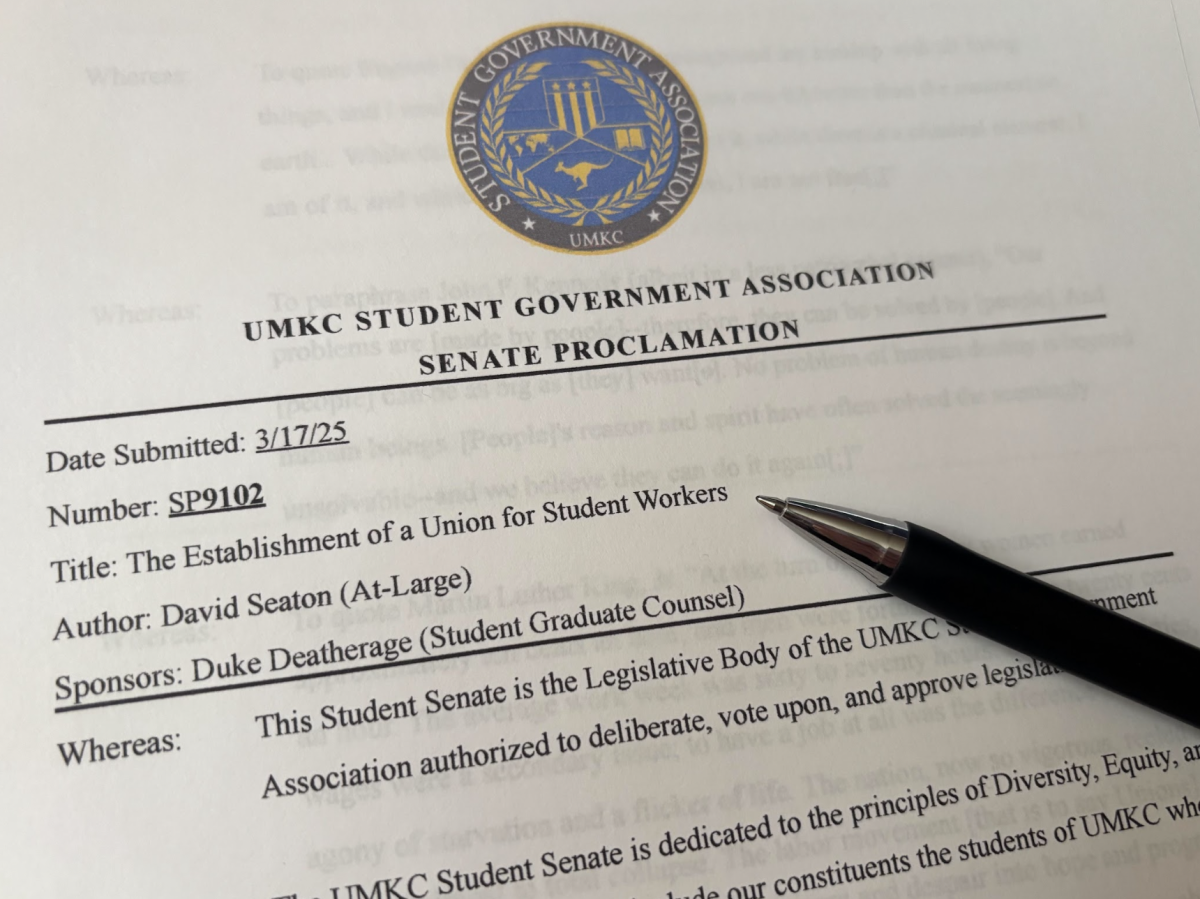A University of California Berkeley art historian will present her research on Luis Quintanilla, a world-renowned artist whose murals have long had a home in UMKC’s Haag Hall, in early November.
Christine Delia studied the impact that loss, distance and exile had on the work of three Spanish artists that eventually moved to México, Morocco and the United States. Quintanilla moved to the U.S. when he was removed from Spain during the Spanish Civil War.
“She’s placing these murals into a different context than we’ve been looking at,” said Dr. Viviana Grieco, a history professor at UMKC and a member of the murals’ restoration team. “Thinking about all these Spanish painters that cannot be in Spain because of exile by the Spanish regime at the time.”
In the early 1940s, UMKC’s then president, Clarence Decker, hired Quintanilla to create a series of murals entitled “Don Quixote in the Modern World,” meant to adorn the walls of the then Fine Arts Building, now Haag Hall, as an open-space art gallery.
“President Decker was a great advocate for Quintanilla and artists in general at the time,” said Dr. Alberto Villamandos, associate professor of Spanish literature and another member of the restoration team. “The murals were very controversial at the time because their aesthetics were kind of grotesque. Some found them disturbing because they were created soon after the second world war had begun.”
Models for the murals were primarily the faces of students and faculty at the time, now immortalized into the walls of the university. Quintanilla took on student apprentices during this process to teach them fresco painting techniques, where painting could only occur on fresh plaster.
In the six panels of “Don Quixote in the Modern World,” Quintanilla dedicated them to Don Quixote, the dreamer, and his squire Sancho Panza, the realist.
The two are represented in both their ideal worlds and their real worlds, depicted in Quintanilla’s view of them in the context of the twentieth century, with symbolic references to the political landscape at the time.
In the panel entitled “Don Quixote in the Twentieth Century,” Quixote is awoken back to reality by a cold bucket of water. He sees a banker revealing a leviathan dressed as Hitler that holds Francisco Franco and dead bodies in its mouth.
“It’s funny, but I think the murals do get the spirit of the book pretty well,” said Francis Gatdula, an accounting student at UMKC. “It’s kind of just a giant farce and there’s a lot going on, but it’s very much people-focused and how people react to these two men.”

Because of the lack of humidity in the space, the murals have been relatively preserved with only minor chips and cracks in the paint. A restoration team made up of UMKC faculty and student researchers are making efforts to see it returned to its original condition, with hopes that restoration work can begin in the summer of 2024.
“These murals just show how rich of a history UMKC truly has,” said Tess Martens, a music therapy student at UMKC. “I think a lot of us don’t realize how intertwined with world history we are. Having that mural in Kansas City is a part of world history, so to have it restored, it would just give it its proper glory.”
The event is scheduled for Nov. 2 at 2:30 p.m. in 205 Royall Hall. Students can register for this event on RooGroups here. This event counts for FSE experience points.
To learn more about the murals and the restoration project, visit here.

















![Alex Unseth [left] and Yasmen Hassen [right] speaking at the dinner.](https://kcroonews.com/wp-content/uploads/2025/04/SGA-1-1200x800.jpg)


